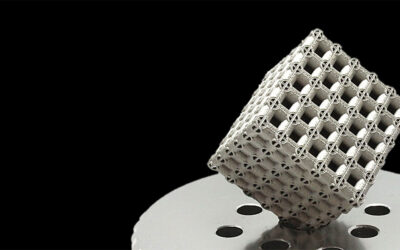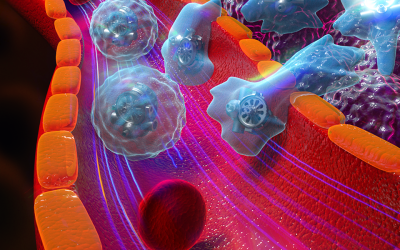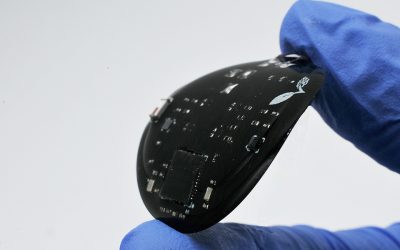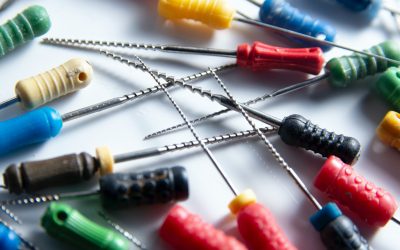In the second of the Author Commentaries written for the 10th anniversary of Advanced Functional Materials in 2010, Prof. Andrey Rogach, Prof. Dmitri Talapin and Dr. Elena Shevchenko look back at the developments in nanocrystal superstructures since the publication of their highly cited Feature Article on this topic in 2002.
Commentary on the article “Organisation of Matter on Different Size Scales: Monodisperse Nanocrystals and Their Superstructures”
By Dmitri V. Talapin, Elena V. Shevchenko, and Andrey L. Rogach
Prof. Dr. D. V. Talapin
Department of Chemistry, The University of Chicago, Chicago, Illinois 60637 (USA)
Dr. E. V. Shevchenko
Center for Nanoscale Materials, Argonne National Laboratory, Argonne, Illinois 60439 (USA)
Prof. A. L. Rogach
Department of Physics and Materials Science, City University of Hong Kong, Tat Chee Avenue, Kowloon (Hong Kong)
Discovery of new functional materials still remains a highly empirical and serendipitous process that is often more of an art than a science. This is because the starting entities (atoms and molecules) do not maintain their properties in the condensed phase. As an everyday example, the chemical and physical properties of NaCl are so much different from those of sodium and chlorine, that it does not seem feasible to accurately predict properties of the NaCl phase from the behaviors of its constituents. One approach to overcome this fundamental problem would be to assemble materials not from the atoms but from “modules” that already carry some useful function, like a semiconductor or a magnet, and preserve this function in the solid state. This idea of using nanocrystals as “modules” for functional materials by letting them self-assemble together into ordered superlattices was in the focus of our Feature Article “Organisation of Matter on Different Size Scales: Monodisperse Nanocrystals and Their Superstructures” published in Advanced Functional Materials in 2002.[1] In superstructures formed by this way, individual nanoparticles can be treated as artificial atoms in the next level of hierarchy. By that time, research community has already developed the methods for synthesizing monodisperse colloidal nanocrystals of several materials, including Au, CdSe, FePt, CoPt3, and demonstrated the possibility of assembling them into simple one-component superlattices with face-centered cubic ordering. It was an excellent starting point for exciting revolution that happened in the nanocrystal research over the past decade. First, thank to the work of many scientists, nanocrystal synthesis has seen a tremendous progress.[2,3] Recent advances in solution-phase synthesis introduced entirely new ways of controlling the size, shape, and even the topology of colloidal nanomaterials. These days most of technologically important metals, semiconductors and magnetic materials can be synthesized in form of highly crystalline and monodisperse nanoparticles. Modern synthetic recipes use less toxic chemicals, are more robust and can easily be reproduced by many research groups. As a result, many scientists are able to make their own “building blocks” enabling complex structures to be created by self-assembly. A great advantage of this approach is its simplicity: 3D assemblies can be prepared by placing a drop of a colloidal solution of monodisperse nanoparticles on a suitable support allowing the carrier solvent to evaporate.
Over the last decade, the combined efforts of several research groups have brought the field of nanocrystal self-assembly to the entirely new level of complexity. Among the most exciting recent milestones, multicomponent nanoparticle superlattices, including more than a dozen of different binary nanoparticle superlattice (BNSL) phases with cubic, hexagonal, tetragonal and orthorhombic symmetries have to be mentioned.[4-6] The first example of self-assembled ternary nanoparticle superlattices has been reported by Vanmaekelbergh group in 2009.[7] Keeping in mind a large variety of high quality monodisperse nanocrystals the scientists are able to synthesize nowadays, each with further adjustable parameters such as size and surface capping, the tool box for the construction of multicomponent superstructures out of them is indeed inexhaustible. Accordingly large is a set of arising fundamental questions which can be addressed on these samples. Multicomponent nanostructures are currently a subject of fundamental studies in terms of manipulating excitons, wavefunctions and surface plasmon resonances.[8] Recently, our efforts have extended the borders of self-assembly of man-made structures to quasicrystalline nanoparticle superlattices.[9] Quasicrystals are a class of materials that show sharp diffraction peaks despite presenting symmetry operations forbidden in classical crystallography. At the same time, little is known about the driving forces that govern self-assembly of nanocrystals into complex binary and ternary phases. Our current scientific interests lie in the fundamental studies of thermodynamics and kinetics of self-assembly process, formation of structural defects in self-assembled nanoparticle superlattices and establishing structure-property relationships in these materials.
Nanocrystal assemblies can provide a powerful general platform for programmable solids with tailored electronic, magnetic, and optical properties. To employ these materials for practical applications (e.g., in solar cells, light-emitting diodes, thermoelectric heat converters, etc), strong electronic coupling between individual nanocrystals must be established.[10] To improve the electronic communication in nanocrystal arrays, the organic surface ligands, forming insulating shells around each nanocrystal, can be replaced with smaller molecules, such as hydrazine.[11] Recently, we also identified a broad class of inorganic molecular species, namely Zintl ions, which can be used as the electronically transparent surface ligands for almost all known colloidal metal and semiconductor nanostructures.[12] The great advantage of Zintl ions as the capping ligands for colloidal nanocrystals is the possibility to convert them into amorphous and crystalline metal chalcogenides with semiconducting properties, thus linking individual nano-building blocks into all-inorganic macroscopic assembly of strongly electronically coupled functional modules. The potential of this new chemistry for electronic bridging of nanocrystals has been recognized by Evident Technologies, NY, who licensed this technology and launched a program toward its practical implementation in advanced thermoelectric materials.
To conclude, superstructures of inorganic nanocrystals have seen a tremendous development in the past decade. The ability to assemble precisely engineered nano-building blocks into complex, hybrid materials with designed properties is opening the door to a new generation of complex materials. We expect that this new class of materials which are sometimes termed as metamaterials in order to stress that their properties arise from the controlled interaction and mutual influence of their components[4,13] will be a source of rich new chemistry and physics and can make an impact in electronics, photovoltaics, thermoelectrics and solid-state lighting. On a personal note, we would like to thank our colleagues, starting from the University of Hamburg where this work has been started in 2002 all over the different stations of our scientific carriers: IBM T.J. Watson Research Center for DVT, Columbia University for EVS, The Molecular Foundry at Lawrence Berkeley National Laboratory for DVT and EVS, and the Ludwig-Maximilians-University (LMU) of Munich for ALR. We acknowledge DFG funding from the LMUexcellent program for financial support making our current joint work on the nanocrystal superstructures possible.
References
(1) A. L. Rogach, D. V. Talapin, E. V. Shevchenko, A. Kornowski, M. Haase, H. Weller. Adv. Func. Mater. 2002, 12, 653-664.
(2) Y. Yin, A. P. Alivisatos. Nature 2005, 437, 664-670.
(3) J. Park, J. Joo, S. G. Kwon, Y. Jang, T. Hyeon. Angew. Chem. Int. Ed. 2007, 46, 4630-4660.
(4) F. X. Redl, K. S. Cho, C. B. Murray, S. O’Brien. Nature 2003, 423, 968-971.
(5) E. V. Shevchenko, D. V. Talapin, N. A. Kotov, S. O’Brien, C. B. Murray. Nature 2006, 439, 55-59.
(6) E. V. Shevchenko, D. V. Talapin, C. B. Murray, S. O’Brien, S. J. Am. Chem Soc. 2006, 128, 3620-3637.
(7) W. H. Evers, H. Friedrich, L. Filion, M. Dijkstra, D. Vanmaekelbergh. Angew. Chem. Int. Ed. 2009, 48, 9655-9657.
(8) E. V. Shevchenko, M. Ringler, A. Schwemer, D. V. Talapin, T. A. Klar, A. L. Rogach, J. Feldmann, A. P. Alivisatos. J. Am. Chem. Soc. 2008, 130, 3274-3275.
(9) D. V. Talapin, E. V. Shevchenko, M. I. Bodnarchuk, X. Ye, J. Chen, C. B. Murray. Nature 2009, 461, 964-967.
(10) D. V. Talapin, J.-S. Lee, M. V. Kovalenko, E. V. Shevchenko. Chem. Rev. 2010, 110, 389-458.
(11) D. V. Talapin, C. B. Murray. Science 2005, 310, 86-89.
(12) M. V. Kovalenko, M. Scheele, D. V. Talapin. Science 2009, 324, 1417-1420.
(13) A. L. Rogach. Angew. Chem. Int. Ed. 2004, 43, 148-149.
















